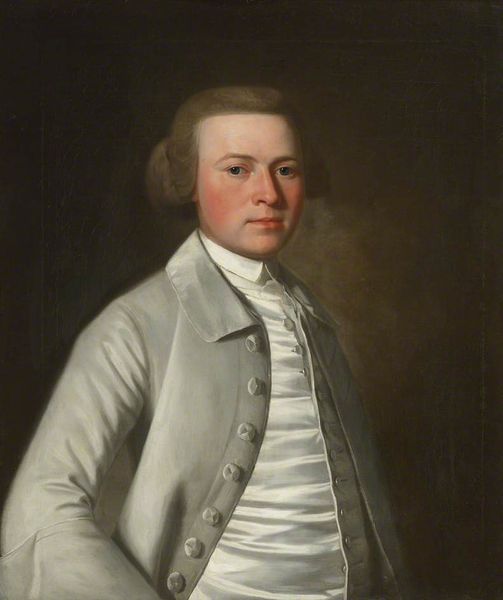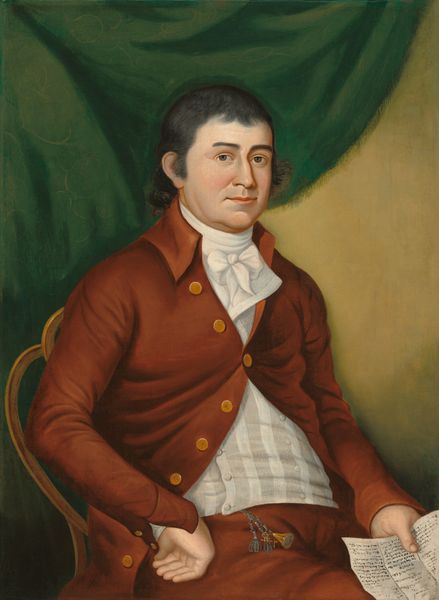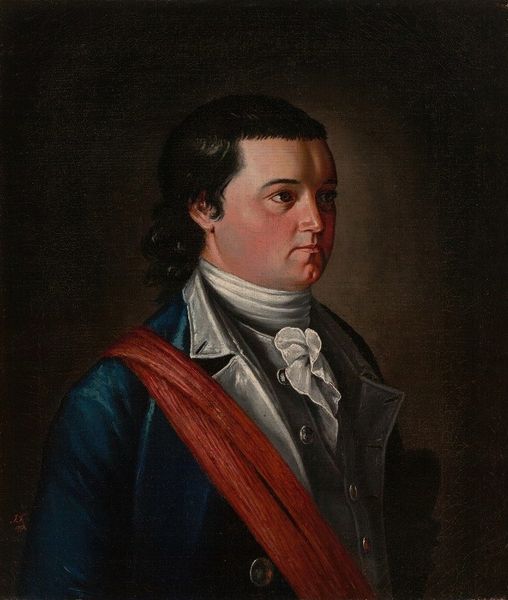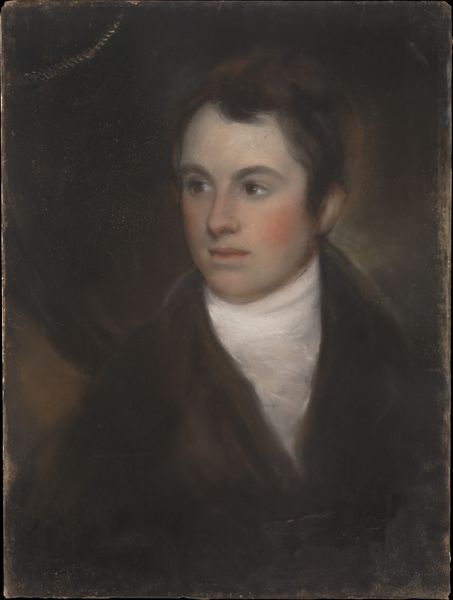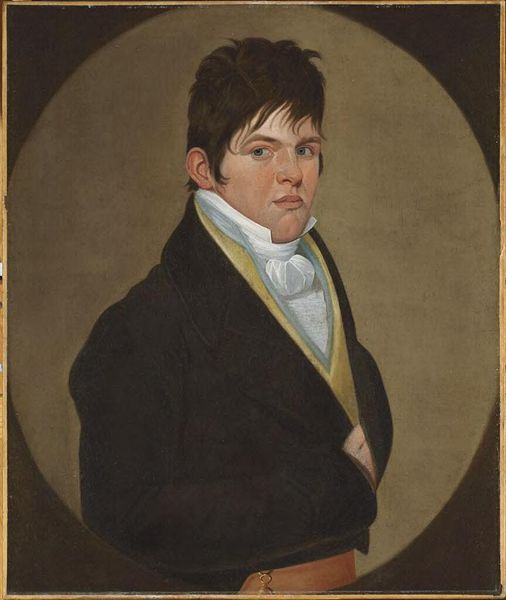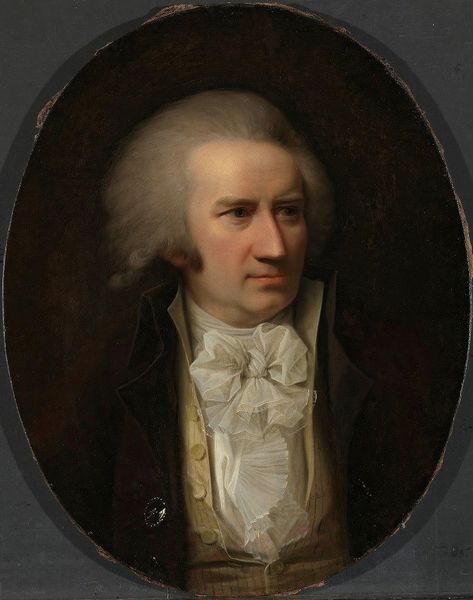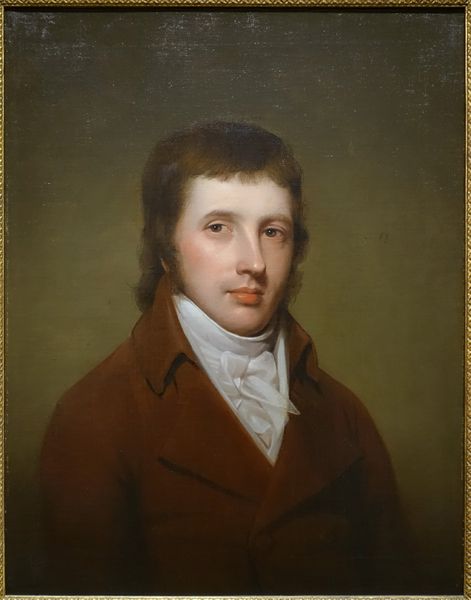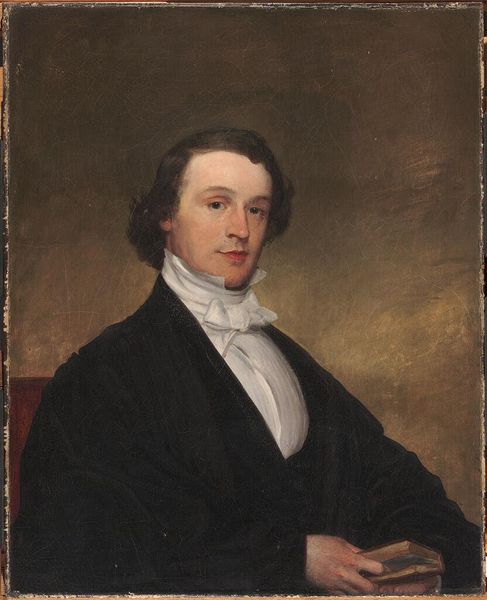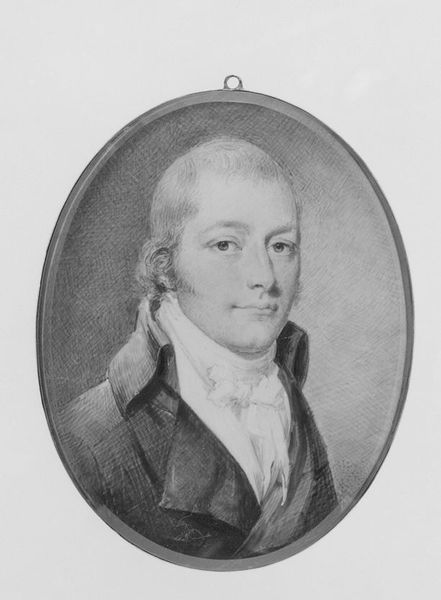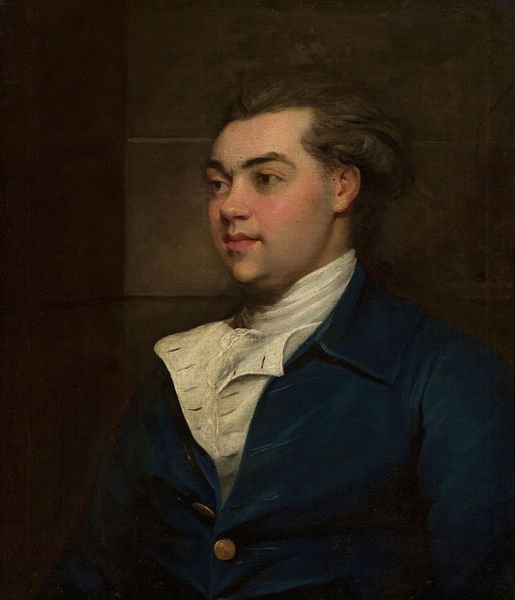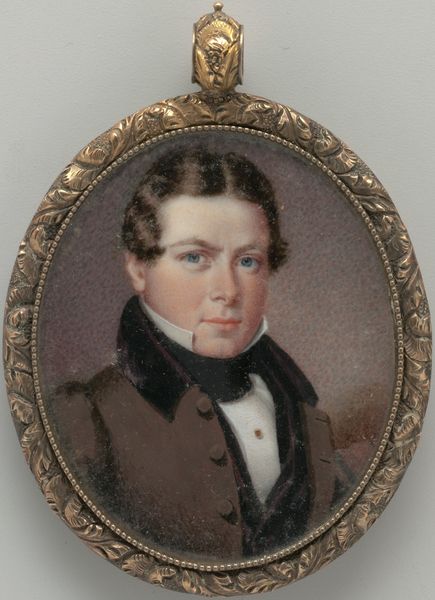
Copyright: Public Domain: Artvee
Editor: Here we have George Romney’s portrait of *James Romney*, made with oil paints around 1760 to 1762. I am immediately drawn to the contrasting shades of blue and the detail of the face, against a relatively muted background. What are your initial thoughts on this piece? Curator: Focus your attention, if you will, on the strategic use of light. Notice how Romney deploys chiaroscuro, subtly sculpting the planes of James's face. This interplay of light and shadow brings volume to the figure. It also creates a compositional focal point drawing our eye inexorably toward the sitter's face, what do you observe? Editor: The lighting definitely emphasizes his face, but also, I think it softens the whole portrait. Is that the purpose of portraiture back then, to show somebody at their best? Curator: Traditionally, portraiture aims to immortalize the subject, showcasing an idealized version through masterful technique. Consider Romney's brushwork: Loose, flowing strokes create texture and depth, while delicate rendering in the face imparts lifelike vitality. Do you see a specific expressive or semiotic tension in the painting? Editor: Maybe in the somewhat contradictory juxtaposition of an easy pose and the rigid jacket with very geometric button arrangement? Is that a fair reading of Romney’s decision to juxtapose these different signs? Curator: Indeed. It reflects tensions in artistic representation during that era. One aspect seeks rigid, neoclassical portraiture, another yearns for movement, a sign of more fluid emotional engagement that would characterize Romanticism a few years later. Overall, I have been able to find value in a renewed approach to composition. Editor: So, from a formal point of view, this portrait bridges different aesthetics. I’ll be thinking about those tensions for a while!
Comments
No comments
Be the first to comment and join the conversation on the ultimate creative platform.
